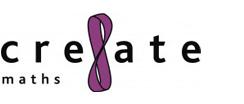Construction and the Built Environment (Other sources of ideas)
A collection of resources which provide ideas and inspiration for teaching mathematics in the context of construction and the built environment. The resources included in this collection require some adaptation to make them appropriate for the particular audience.
Architect's Skills
This activity Architect's Skills is designed to develop the process skills involved in understanding and making sense of mathematical information. Students have to give unambiguous descriptions to enable their partner to build an identical copy of a hidden shape, whilst the partner has to listen and interpret the descriptions accurately.
Different views is designed to engage pupils in visualising a three dimensional object from limited but sufficient information, given in code, for the front, side and plan views of shapes. Students then progress to Decoding plans, where they are invited to build 3-D models from the codes for each shape.
Motivating Maths at GCSE: Outdoor Trigonometry
In this video Andy Grice, teacher of mathematics at Brune Park Community College in Gosport, delivers a practical lesson on trigonometry to a class of GCSE students. Working in groups, they first estimate the height of four buildings on the school site. They then measure actual distances and angles which are used, back in the classroom, to calculate the heights of the buildings and compare these to their original estimates. Feedback from the students is positive and Andy and his colleagues analyse the success of the lesson and discuss some of the issues that emerged.
Building a Town
In Building a town, students are encouraged to consider the mathematical shapes which form the net of a building. Some simple models are shown and students could use these to construct their nets, before building the models themselves.
This activity could be extended so that students produce models of buildings from their area. Buildings with sloping roofs will offer opportunities for experimenting, measuring, or applying Pythagoras’ theorem, in order to draw accurate nets, whilst conical roofs could provide opportunities to work with the formula for the circumference of a circle.
Heat Loss from Buildings
This resource asks the question: how can the most efficient design be determined, taking both building and running costs into account?
The introduction considers the thermal conductivity of different materials graphically to help decide which material should be used. There follows an explanation of the concept of kilowatt hours. A video accompanies the resource explaining thermal conductivity.
The mathematics covered in this activity is:
• Solve problems involving area, perimeter and volume
• Use scale drawings
• Work with formulae for the areas and perimeters of plane shapes
• Work with formulae for surface areas and volumes of regular solids
• Be able to draw graphs by constructing a table of values
• Be able to extract information from a graph
Rigid Structures
This activity looks at the exciting mathematics connected with the regeneration going on in our cities. The three activities are based around the construction of rigid structures and provide opportunities for practical work and mathematical problem solving.
Finding rigidity introduces students to the principle of rigidity and provides the opportunity to study images of buildings and identify what makes them rigid, before investigating local buildings of their own choosing.
Testing rigidity and Bracing squares engage students in building structures using geostrips and challenges them to apply their experience to predict if diagrams of structures are rigid, before building them to test their conjectures.
A Bridge Too Many
A Bridge too Many is a set of teaching materials which offer a cross-curricular approach to learning about engineering. The context for the activities is a challenge based on a large model bridge that has been pre-constructed using prefabricated components, with weak pins joining the structure together. The challenge is to remove the bridge from over a railway without dropping anything on the tracks.
Students, working in teams, have to use the information supplied (drawings, technical information on the weight, strength, etc., of the girders), information on how to calculate the loads in a pin-jointed framework, information on the weights of the various pipes, conveyor components, cladding sheets, technical data on a range of cranes and so on, to plan the dismantling and removal of the bridge. They should prepare a detailed report to the Railway Safety Officer (the Tutor), who approves or rejects it. Students have a set of components available if they wish to construct a model to confirm the results of their calculations experimentally.
Once the plan has been prepared, the team is required to remove the model bridge from over the railway, without accident. Successful completion of the task can result in a form of certification for the students.
Construction and the built environment
Return to the main collection




